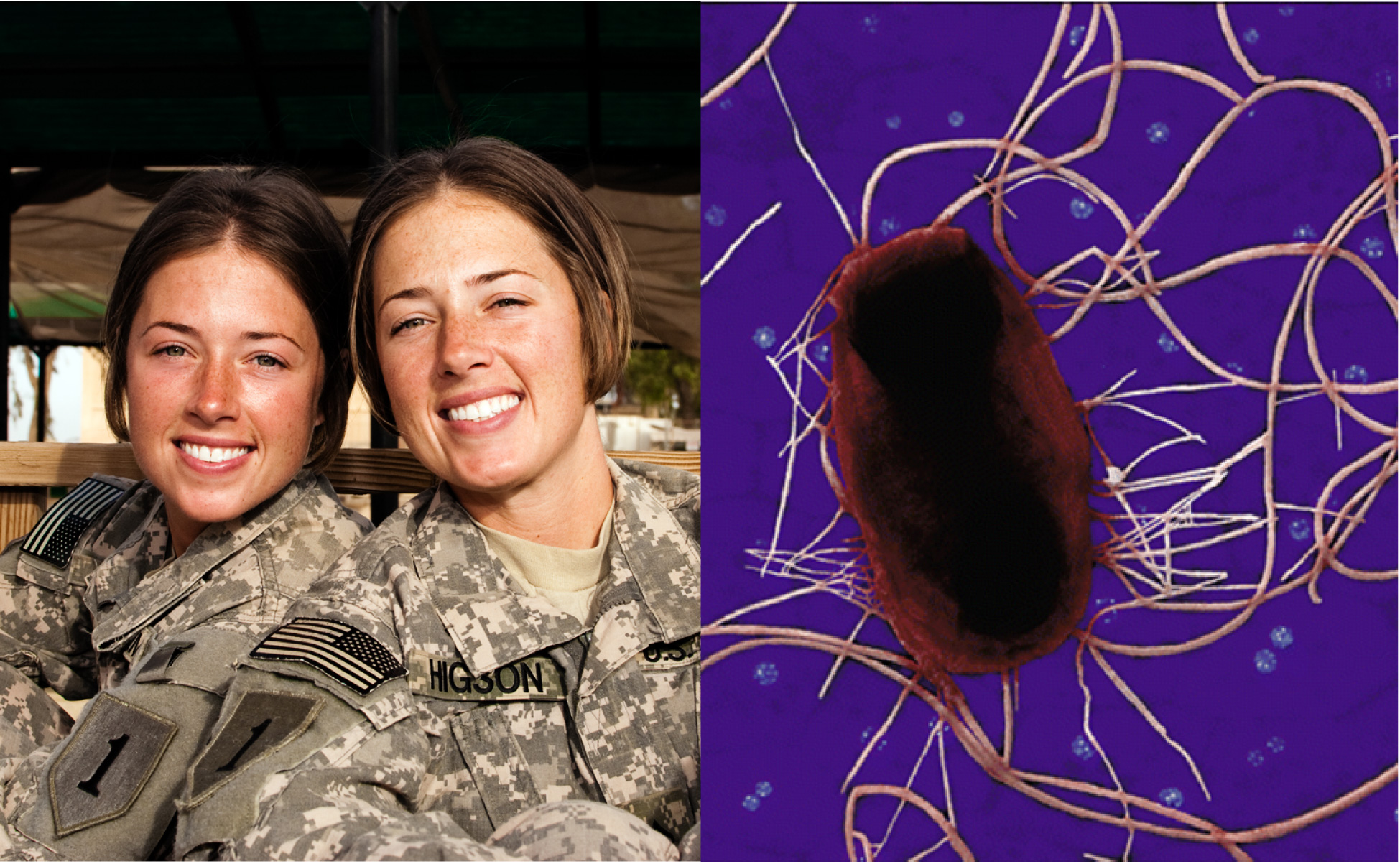10: Biochemistry of the Genome
- Page ID
- 5174
Children inherit some characteristics from each parent. Siblings typically look similar to each other, but not exactly the same—except in the case of identical twins. How can we explain these phenomena? The answers lie in heredity (the transmission of traits from one generation to the next) and genetics (the science of heredity). Because humans reproduce sexually, 50% of a child’s genes come from the mother’s egg cell and the remaining 50% from the father’s sperm cell. Sperm and egg are formed through the process of meiosis, where DNA recombination occurs. Thus, there is no predictable pattern as to which 50% comes from which parent. Thus, siblings have only some genes, and their associated characteristics, in common. Identical twins are the exception, because they are genetically identical.
Genetic differences among related microbes also dictate many observed biochemical and virulence differences. For example, some strains of the bacterium Escherichia coli are harmless members of the normal microbiota in the human gastrointestinal tract. Other strains of the same species have genes that give them the ability to cause disease. In bacteria, such genes are not inherited via sexual reproduction, as in humans. Often, they are transferred via plasmids, small circular pieces of double-stranded DNA that can be exchanged between prokaryotes.

- 10.1: Using Microbiology to Discover the Secrets of Life
- DNA was discovered and characterized long before its role in heredity was understood. Microbiologists played significant roles in demonstrating that DNA is the hereditary information found within cells. In the 1850s and 1860s, Gregor Mendel experimented with true-breeding garden peas to demonstrate the heritability of specific observable traits. In 1869, Friedrich Miescher isolated and purified a compound rich in phosphorus from the nuclei of white blood cells; he named the compound nuclein.
- 10.2: Structure and Function of DNA
- Nucleic acids are composed of nucleotides, each of which contains a pentose sugar, a phosphate group, and a nitrogenous base. Deoxyribonucleotides within DNA contain deoxyribose as the pentose sugar. DNA contains the pyrimidines cytosine and thymine, and the purines adenine and guanine. Nucleotides are linked together by phosphodiester bonds between the 5ʹ phosphate group of one nucleotide and the 3ʹ hydroxyl group of another.
- 10.3: Structure and Function of RNA
- Ribonucleic acid (RNA) is typically single stranded and contains ribose as its pentose sugar and the pyrimidine uracil instead of thymine. An RNA strand can undergo significant intramolecular base pairing to take on a three-dimensional structure. There are three main types of RNA, all involved in protein synthesis. Messenger RNA (mRNA) serves as the intermediary between DNA and the synthesis of protein products during translation.
- 10.4: The Structure and Function of Cellular Genomes
- The entire genetic content of a cell is its genome. Genes code for proteins, or stable RNA molecules, each of which carries out a specific function in the cell. Although the genotype that a cell possesses remains constant, expression of genes is dependent on environmental conditions. A phenotype is the observable characteristics of a cell (or organism) at a given point in time and results from the complement of genes currently being used.
Thumbnail: In the laboratory, the double helix can be denatured to single-stranded DNA through exposure to heat or chemicals, and then renatured through cooling or removal of chemical denaturants to allow the DNA strands to reanneal. (credit: modification of work by Hernández-Lemus E, Nicasio-Collazo LA, Castañeda-Priego R)


